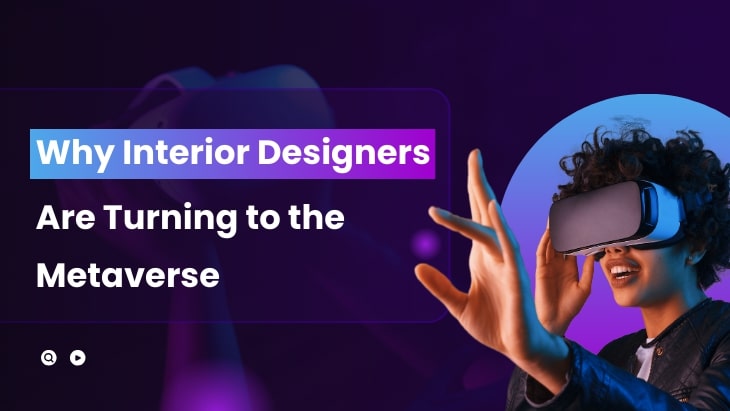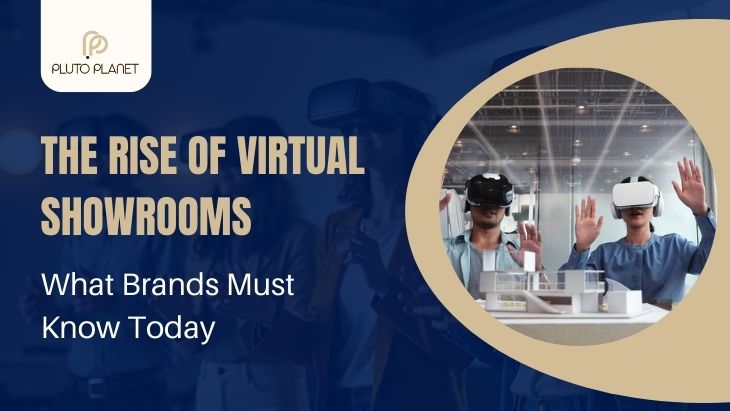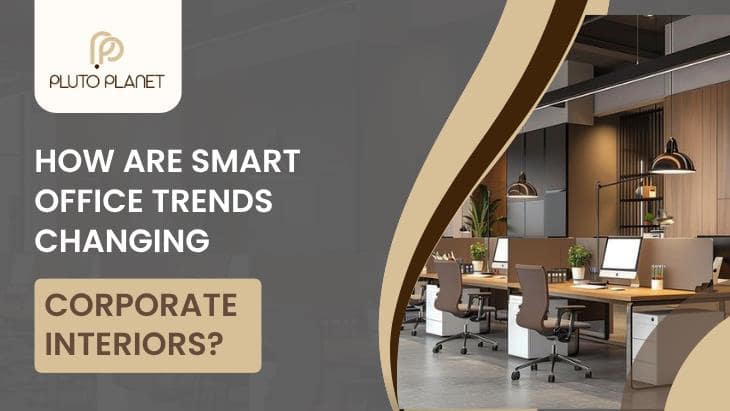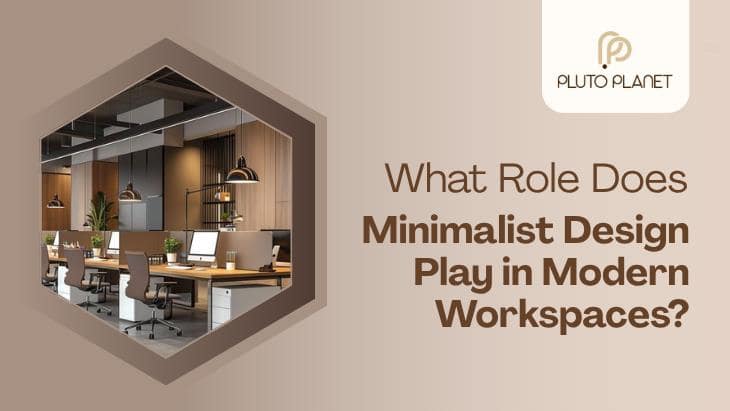Technology is transforming all the creative industries, and interior design is not an exception. The world of architecture and even furniture design is taking advantage of the digital world to help visualise, plan and carry out with new levels of accuracy never before imagined. A new frontier has now been opened: Metaverse, an immersive, interactive shared digital space that is a combination of virtual reality (VR), augmented reality (AR), and 3D modelling.
Innovative firms such as Pluto Planet are demonstrating that the advancement of technology into the design process is not an option anymore, and it has become a requirement. Interior designers are entering virtual worlds as an avenue where they can conceptualise, collaborate and present their designs in a manner that was not possible a few years back. And yet what is the rationale behind so many professionals taking this digital leap? Close up.
The Metaverse as it affects designers
Metaphorically described, the Metaverse is an immersive, consistently existing place where individuals are able to communicate, experience and create using avatars and digital surroundings. The word is commonly linked with gaming and social media, but the uses in design are life-changing.
The important technologies driving this change are:
Virtual Reality (VR): 3D experiences of spaces that do not yet exist, presented in a fully immersive way.
Augmented Reality (AR): It places virtual objects over items in the real world, allowing a designer to match furniture, colours and material on the spot.
3D Modelling: Offers presentation of a realistic image of contracts and furniture.
NFTs and Digital Assets: Enables designers to establish unique and tradeable digital furniture and art.
These tools together produce a huge improvement in work. Designers are able to draft, edit, and share their ideas in real time, so they do not have to wait on physical models or mock-ups. And it is here where Pluto Planet has an edge – facilitating the smooth transition of the design professionals into the adoption of these revolutionary tools.
Physical to Virtual Spaces Shift
Conventional interior designing procedures are limited in nature. It is costly and time-consuming to construct physical models, and late-stage changes are very expensive to make. Clients usually have difficulty visualising how their sketches of the flat would converge into actual spaces.
The metaverse answers these problems. In just a few clicks, designers and clients can utilise 3D immersive environments that give them the feeling that they are virtually walking through a room whose first brick they have not laid or whose walls they have not yet painted. With real-time collaboration tools, teams in globally dispersed locations can make design adjustments (modify layouts, change lighting, move furniture) in real time and without shuttling design samples or reprinting drawings.
An example of this would be a designer operating under Pluto Planet; his or her clients could be taken through a VR session in which they see a complete apartment with finishing touches and layouts that are subject to your choice. Such a degree of visualisation instills confidence and speeds decision-making.
Advantages to the Interior Designers
Using the Metaverse tools has a number of concrete benefits:
Proper pre-visualisation Prior to Execution: Designers will be able to show hyper-realistic interiors; clients will not be misled about what they are receiving.
Reducing Costs and Errors: Errors are reduced since design issues are identified at the earliest stages of virtual walkthroughs, thereby reducing the cost of mistakes that could be corrected on-site.
International Accessibility: Designers can send project proposals to global clients without travelling.
Without Limits: The physical boundaries are eliminated, and the freedom will allow the designers to experiment with vivid forms, floating things or imaginary and imaginative ideas to impress customers.
Firms such as Pluto Planet are assisting designers to marry art and technology, and this is indicative of the fact that incorporating technology in design may complement but is not to be used to replace creativity.
Client Metaverse
To customers it is transformative. They do not risk flipping through static mood boards or wait in anticipation of any renderings since they can just go into virtual showrooms where the design detail feels so tactile. They can change existing colour schemes, interchange furniture on a real-time basis and gain approval of designs right in their living room without having to leave it.
Project schedules are reduced using this interactive method. Clients will be able to make decisions quicker as they are not guessing – they are seeing and experiencing the space as it will be. VR platforms offered by Pluto Planet go beyond that possibility even further, as they enable clients to trial their future workplace or home space by taking a virtual walk in it, guaranteeing them both comfort and functionality prior to physical work commencing.
Applications and Early Advertisers At the Outset of the Real World
The metaverse is already being adopted by many creative designers and studios. Others are whole apartment buildings selling high-end apartments entirely online, including furnishing them with NFT-backed digital furnishings. Other applications include educating design students or running virtual trade shows.
First-movers raise some notable uses:
Virtual Staging: Ideal where real estate developers need to sell property that is unfinished.
Digital Furniture Showrooms: Give the brands the chance to present the collections but without having to transport the materials.
Workflow: batches can meet in a mutual online zone and brainstorm or introduce ideas to investment funds.
The Pluto Planet has worked in the production of these immersive events, a show that shows the importance of technology integration into the design, making it an innovative process. It has not gone unnoticed by big brands: some continue to invest in virtual retail stores to showcase goods, and high-end designers are producing bespoke NFT furniture as collectibles.
Things Humped and Things Thought About.
Although it has numerous benefits, the introduction of Metaverse tools may also imply challenges:
Technology Cost: VR headsets, software licences, and high-end workstations are expensive to purchase.
The Learning Curve: New platforms and 3D workflows can be rather scary at first.
Client Education: There is the possibility that some clients may not be comfortable with virtual environments because they are not familiar with that technology.
Nonetheless, these barriers are slowly closing given the ease of use of platforms and the decrease in prices. Such companies as Pluto Planet provide full-scale boarding so that designers can effortlessly shift to using digital, doing so without compromising their creativity and productivity.
The Metaverse Future of Interior Design
The metaverse has the potential of becoming the in-thing in interior design and not a speciality product. VR devices will become more democratised, at a lower cost, and many more design studios (even smaller ones) will find space in their workflow to use immersive tools.
It is likely to be a combination in a hybrid approach where the physical design tools and the virtual design tools complement rather than cancel each other. Or, one may imagine that designers may create something in VR, edit it digitally and finally detail it traditionally.
First movers already have a competitive advantage. Already now, by implementing Metaverse tools, designers can enjoy the potential of the latest technology and be appealing to technologically aware clients while automating the process in general. The depth of experience at Pluto Planet offers the assurance that the designers remain on the front edge of the rapidly changing scene by giving platforms and aid required to prosper in this ever-changing domain.
Conclusion
The Metaverse is not only going to change the future of both gaming and social media, but it will also change the future of interior design. Integrating technology in design with creativity, designers can be able to visualise their projects with unprecedented clarity and collaborate around the globe. Designers also are able to deliver spaces that go beyond the expectations of their clients.
Firms such as Pluto Planet are shaping the revolution of how the realisation of interiors is being conducted using digital technology-based processes, showing just how digital tools can reinvent the way interiors are visualised, tested, and constructed. People who adopt this digital revolution will become better equipped at facing a future in which virtual and real worlds complement each other.
There is no boundary to the Metaverse, and within these virtual spaces, the interior designer needs only his or her imagination, and the process of magic is always fun.









Leave a reply